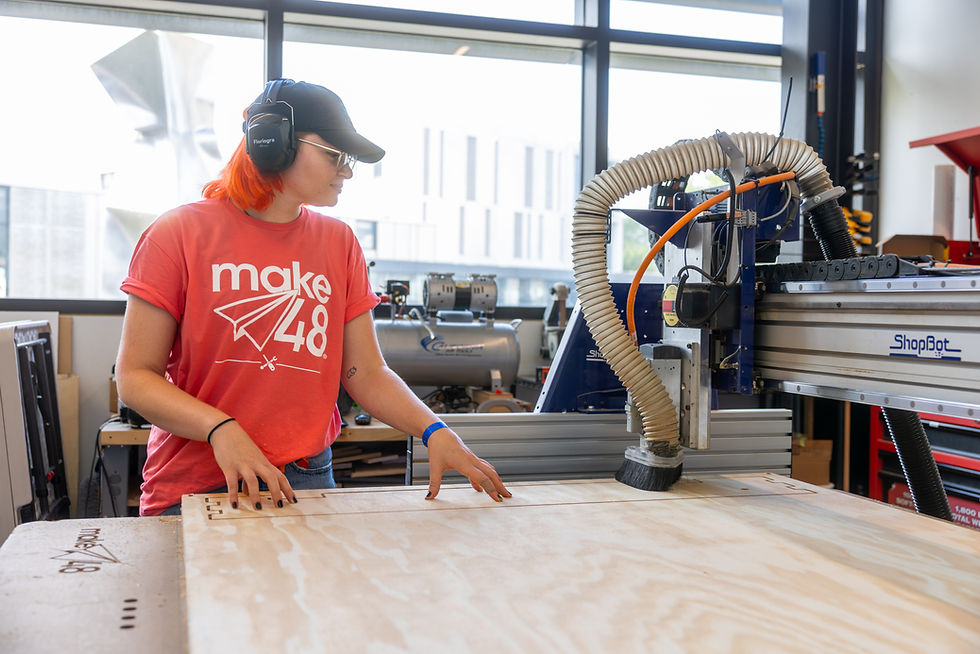Why the Prototype is the Blueprint for Manufacturing Success
- Make48+Team

- Oct 30
- 2 min read
Imagine a builder constructing a high-rise without architectural drawings, or a chef preparing a gourmet meal without a recipe. The outcome would be, at best, a gamble. In the world of product development and manufacturing, that "architectural drawing" or "recipe" is the functional prototype.
Far too many entrepreneurs and companies, eager to capitalize on momentum, make the critical error of rushing from concept to mass production. They view the prototype as a mere formality—a simple, rough model to check a box. They couldn't be more wrong.
The truth is, the prototype is not a hurdle; it is the blueprint for manufacturing success.

At the high-pressure, 48-hour invention competition Make48, teams live by this principle. Their "product," created under extreme time constraints, must be more than just an idea—it must be an accurate, functional proof of concept. This model serves as the indispensable blueprint that identifies flaws, validates design, and ultimately dictates the tooling and assembly process for the final, mass-produced goods.
Trying to bypass this crucial step is a recipe for catastrophic and costly failure down the line. A flawed prototype leads to flawed tooling, endless revisions, and budget overruns that can sink a product before it ever hits the shelf.

Tool technicians from MakerBot and UltiMaker highlighted 3D Printing as the workhorse for low-cost, immediate dimensional testing and concept validation. As the designs evolve, the need for precision increases. Experts utilizing ShopBot Tools emphasized that CNC Machines provide the crucial ability to mill parts from production-grade materials, while Laser Engravers, such as Epilog machines, are essential for etching detailed marks or cuttings with high accuracy. For prototypes requiring robust metal joints and strong structural integrity, Lincoln Electric welding equipment is indispensable for joining components with the necessary durability and precision.

The element connecting all this hardware is Cloud-Based CAD. Technicians universally stressed that systems like Onshape provide the indispensable backbone for real-time design sharing and revision tracking across dispersed teams. Finally, we can’t forget the human element: hand tools and expertise in textiles remain essential for quick, on-the-spot adjustments, finishing, and the creation of any functional soft goods integral to the product.
The lesson learned from Make48’s competition is clear: the most efficient path to market is never the fastest path to production. By treating the functional prototype—built with precision tools from MakerBot, UltiMaker, ShopBot Tools, Epilog, and designed in Onshape—as the non-negotiable blueprint, you eliminate the guesswork and mitigate the crippling costs of re-tooling.
So, the next time you feel the pressure to skip ahead, remember the advice of the tool techs: invest the time and resources into creating a rock-solid blueprint. It's the only way to ensure your product moves from concept to scalable success without delays or unexpected expense. Start seeing it for what it truly is: the single most critical investment that guarantees your product’s success on the manufacturing line and ultimately, in the consumer's hands.




Comments